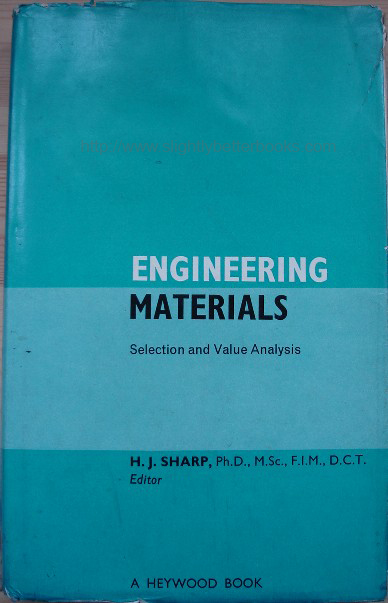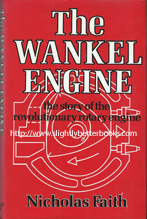

Slightly Better Books
Category Focus:
Engineering
| Engineering | ||
| In Pictures: | ****Hyperlinked titles will take you to our copy on sale or prebuilt searches of copies on sale****
Useful Links: |
|
 1966. Heywood Books Sorry, sold out, but click image above to access a prebuilt search for this title on Amazon UK Alternative online retailers to try: |
About the book/synopsis: This applies whether the problem is the extreme reliability required in the atomic energy field or the balance between the properties and the production and material costs in mass production engineering. Materials selection is considered therefore through a value analysis approach. Some cost information is included as in most instances relative costs, except those relating to very new materials, remain fairly static although actual costs may change. An attempt has been made to cover the more important conventional materials and also the more interesting innovations. The introductory chapter stresses the importance of value analysis, and there follow detailed treaments of particular design aspects or groups of materials. Each chapter has been written by an acknowledged expert in the field. As much factual information as possible has been given, often in the form of tables, and there are extensive lists of references at the ends of the chapters. The works should be invaluable to engineers, designers, metallurgists, and experts in the newer disciplines of materials science and materials engineering. It should help to break down the barriers raised by specialization in these fields and, with its value analysis approach, it should assist in solving many future problems in the selection of materials. Chapters: |
Alternative Amazon listing (duplicate) |
 1976, George Allen & Unwin, hbk In stock: £30.00 Alternative online retailers to try:
|
Synopsis: The Wankel rotary engine -named for its inventor, Dr. Felix Wankel - is the single most revolutionary new idea in motoring since the piston engine was developed. As Nicholas Faith writes, 'had the rotary engine been developed seventy years before the piston engine we now use, and not seventy years after, anyone selling the idea of the heavy, noisy, complex, reciprocating engine, using fuel far more refined than that required by a rotary, would have been laughed out of court. Nicholas Faith traces how Wankel first solved many of the problems of the rotary engine - which in theory is much more efficient than the piston engine - under contract for the Luftwaffe; how the first key developments were undertaken by a small German motorcycle company, NSU; how the idea was spread worldwide by an American showman-businessman, Roy Hurley; how a quiet Japanese engineer first produced a working commercial model of the engine; how the idea is used for everything from model (and full-sized) aeroplanes to outboard motors, and how the giant General Motors gave its seal of approval to the idea years ago. The book is partly a story of technical advances. Much more, it is the intricate and fascinating story of the human and business factors which affect a major invention. It involves, on the one hand, big, modern corporations - each with its own mystique, its own internal conflicts - while, on the other, it brings in innumerable wheeler-dealers, bankers, entrepreneurs, middlemen, characters who sometimes seem to have strayed from the more casual, more personal days of 19th Century capitalism. Contents: |
|
Engineering Books on Ebay Right Now! [top]
|
||